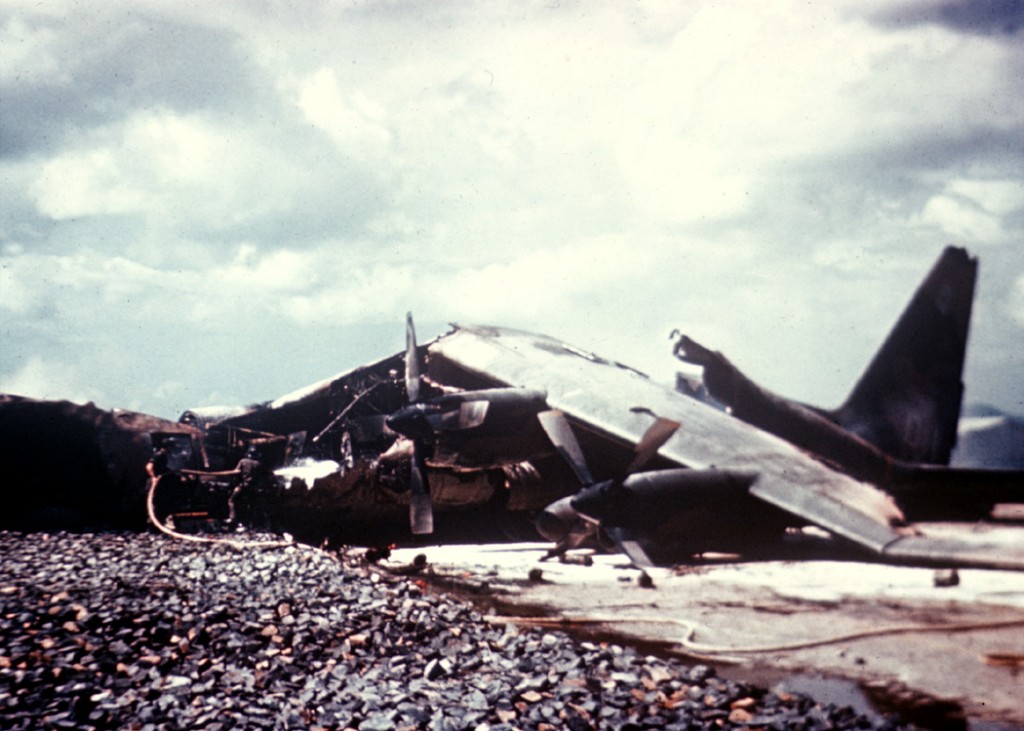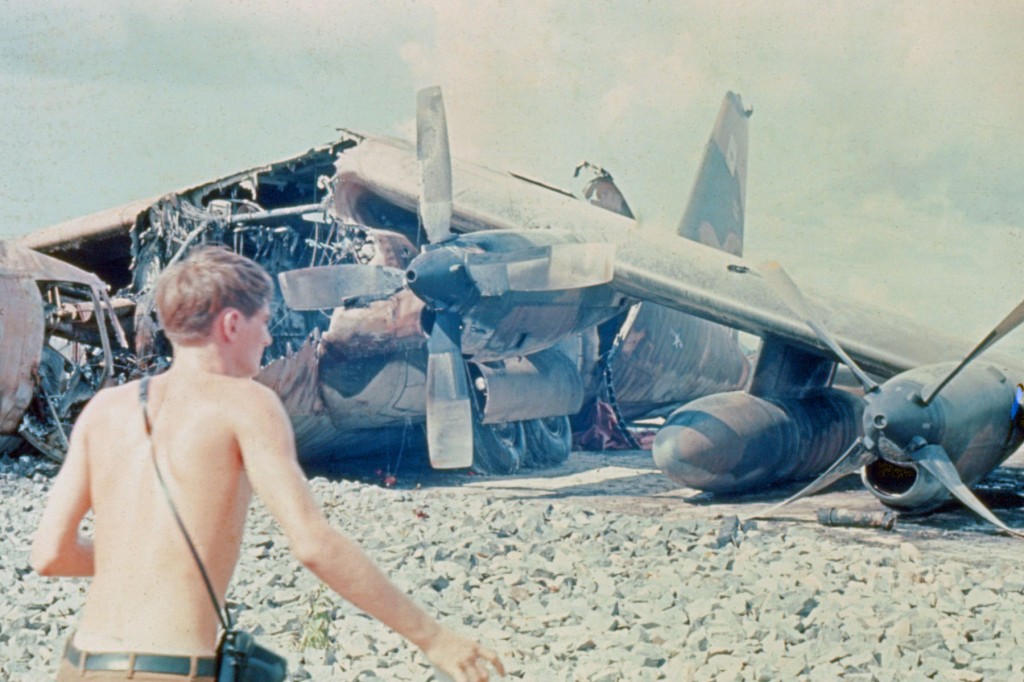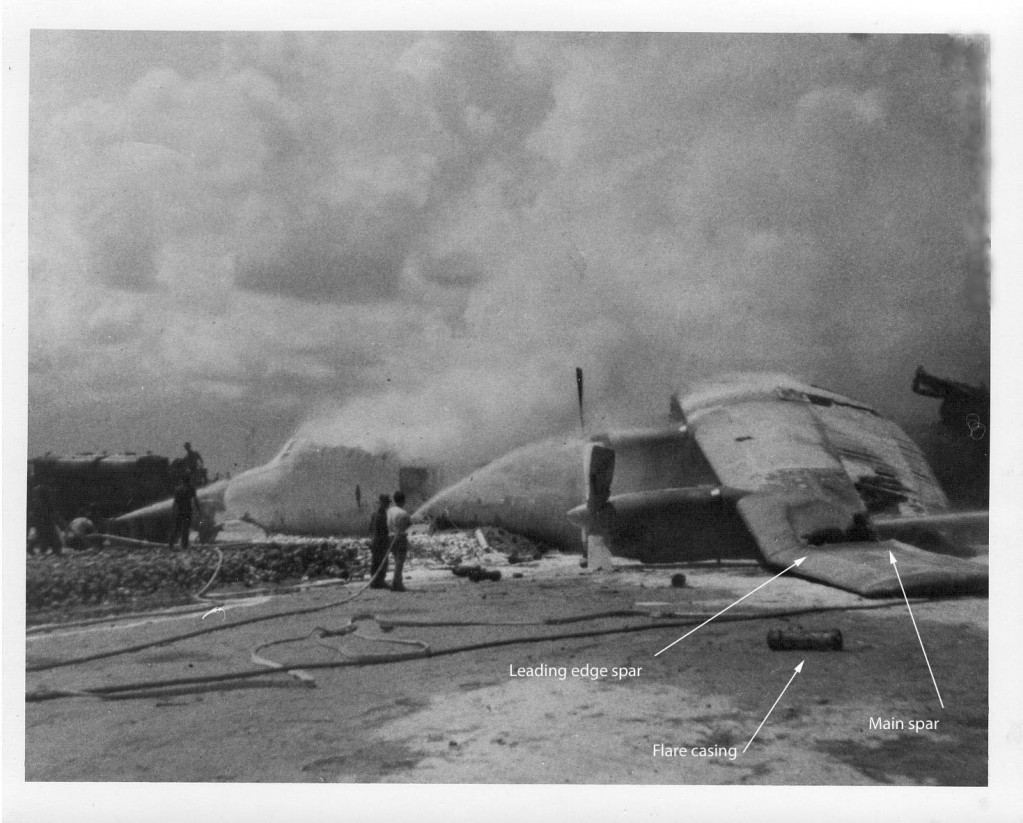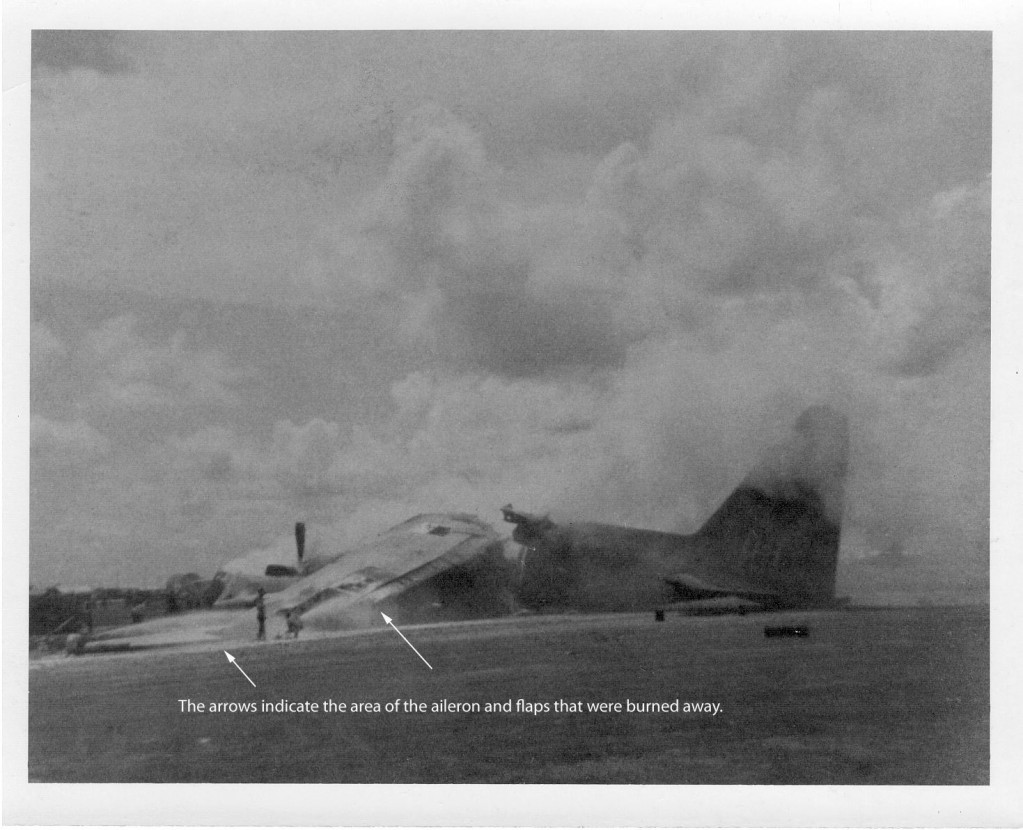Fire in Flight – Page 12.
Here are a few postmortem photographs. Click on the photo for a full-size version. What is significant to me when viewing these photos is that the weight of the wing collapsing on the left tip was enough to break off the section of wing outboard of the #1 engine. This is how weak the structure had become. Obviously, the post-crash fire weakened it some more, but, nevertheless, we were extremely fortunate that it didn't come off in flight.

Fig. 19 - You can readily see where the in-flight fire had been on the left wing tip where the wing is bent.
The black-and-white photos on the right above and the lower left are part of a series of official USAF photographs given to me upon our return to CCK. All the other b&w photos are from this set.

Fig. 22 - #2 engine and prop appear untouched and the feathered #1 engine is resting on the ground. The gentleman in the foreground is one of the base personnel whose identity is unknown to us.
You can see in Figures 20 and 21 where the life-raft compartment door is open on the top of the left wing. Referring to Figure 21, the two white arrows point to the location of the trailing edge devices that were lost to the fire, about half the aileron and a third of the flap. Obviously, the loss of these devices contributed to the loss of lift on the left wing, exacerbating the roll to the left on final.

